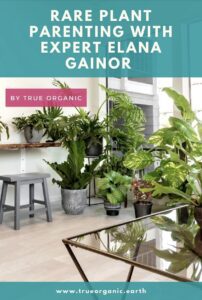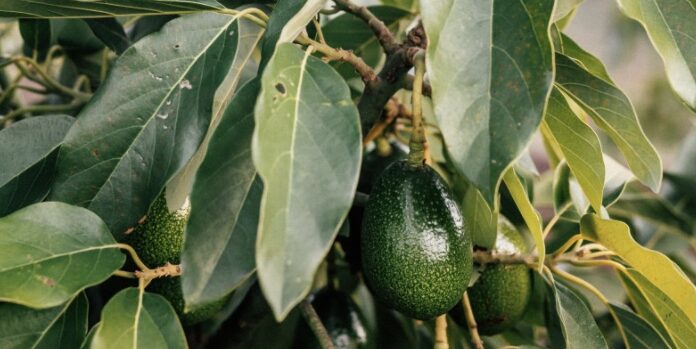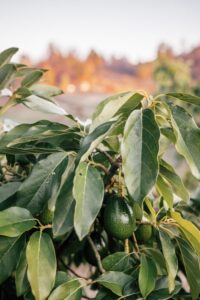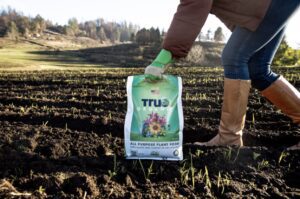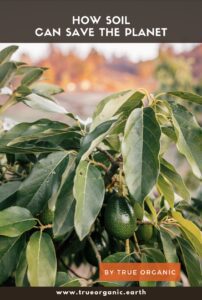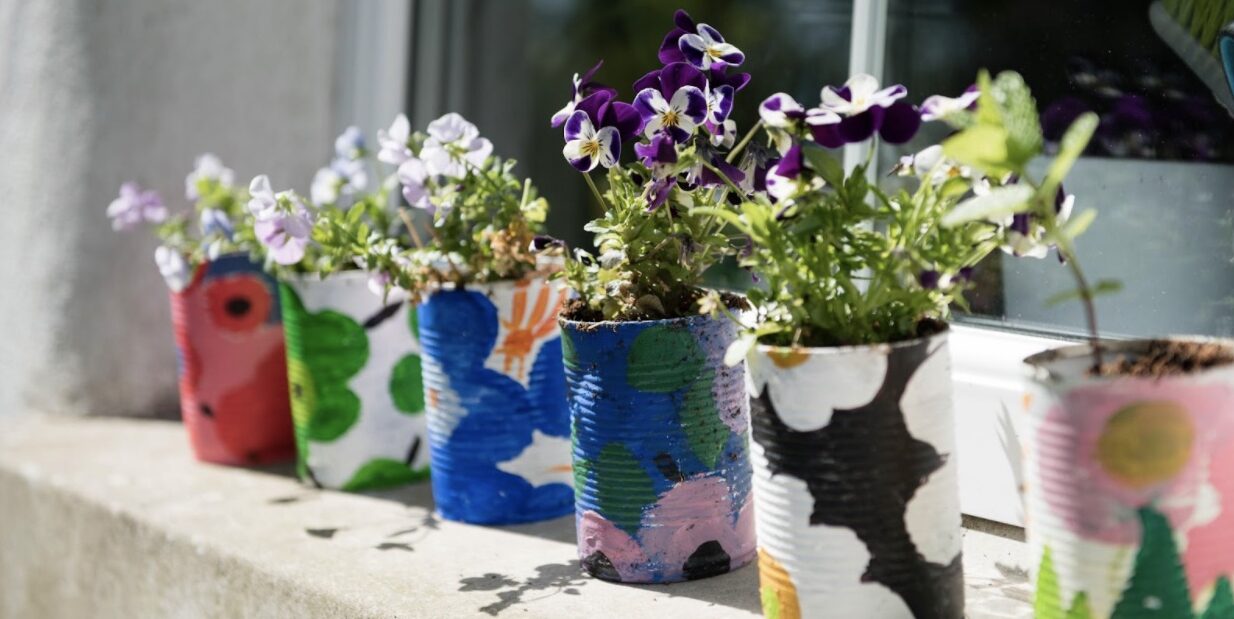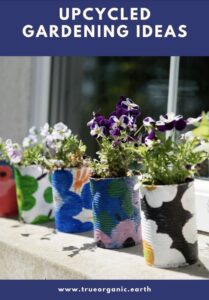The Perfect Holiday Dinner From Your Organic Garden
December 21, 2021
admin
The Perfect Holiday Dinner From Your Organic Garden
Whatever you’re celebrating this season, here’s our guide to a holiday table created right from your organic garden.
The joys of cooking from your own garden are endless. Is it the fresh flavor that you love most about garden-to-table meals? The ease of grabbing ingredients right outside your back door? Nutrient-packed organic food for your family and friends? Getting creative in the kitchen with what you have in your weekly harvest?
We’ll go first: All of the above!
Sautéed Greens
Leafy greens are a Fall and Winter favorite and may be able to grow throughout the cold season, depending on your climate. Any mixture of greens works for a simple but succulent, sautéed green dish — always a favorite side dish at any holiday meal.
Try a mix of greens, such as spinach, collard greens, mustard greens, chard, or kale. Every variety of greens works well, and the different colors and textures of leaves can add a pleasing visual aesthetic to your holiday table.
Cooking Tips for Sautéed Greens:
The best part about making sautéed greens is that they’re hard to mess up! Especially when picked fresh from your own garden and full of flavor. Maybe you prepped your greens this Fall with seabird guano for an extra lush harvest!
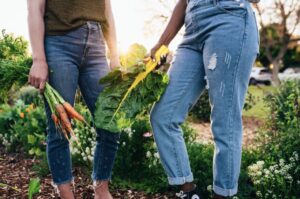
The other big difference between mediocre sautéed greens and fantastic sautéed greens is seasoning. You don’t need to do anything fancy to get great flavor in this dish, but you do need to do something to those leafy greens.
The best flavors enhancers for sautéed greens:
- Garlic (chopped or powder)
- Coarse salt (not too much!)
- Lemon
- Shallot
- Slivered almonds
- Sherry vinegar
Follow this Easy Sautéed Mixed Greens recipe from The Spruce Eats for a quick and simple preparation.
Roasted Root Vegetables
The versatility of roasted veggies makes it another easy dish for the holiday cook — and the tastiness makes it a go-to favorite for everyone at the table.
Not only are root veggies going to add an incredible rainbow of color and flavor to your holiday feast, but they’ll also provide a huge boost of nutrition to the meal. Some people are hesitant about the prep and cooking time for roasted vegetables, but we guarantee it’s worth it.
Preparing root vegetables, such as beets and potatoes, can take a good dose of elbow grease to peel and cut, . Which can be followed by a seemingly long time to roast these pieces into tasty morsels. However, they can be chopped and prepared ahead of time, and they won’t suffer from being reheated briefly in the oven before serving if timing is a concern.
One of the best things about any roasted veggie dish is how simple it is to combine whatever root vegetables you have on hand. Beets, carrots, red potatoes, and sweet potatoes make a tip-top roasting combo.
Ready to roast?
- Preheat oven to 425 degrees
- Peel beets and carrots, and remove any scars or eyes from potatoes
- Chop into 2-inch cubes
- Peel, chop, and add a few garlic cloves (to taste)
- In a big bowl, toss in a light coating of olive oil
- Add sea salt and ground black pepper
- Spread evenly on baking sheet
- Cook for 45-60 minutes or until tender
- Toss some sage and rosemary leaves on the pan about 10 minutes before cooking is complete for extra zest and crunch
For more flavors, try parsnips, sunchokes (also called Jerusalem artichokes), golden beets, and red onions. And try adding just one of the following: a sprinkle of cayenne pepper, a dusting of paprika, or a drizzle of truffle oil right out of the oven.
 Winter Squash
Winter Squash
There’s such a wide variety of Fall and Winter squashes, each with its own unique character, flavor, and color. Their unique beauty makes them delightful for holiday celebration menus, and their versatility fits into any meal.
We’re partial to delicata squash for holiday meals because it’s quick-cooking and doesn’t need to be skinned. Delicata is also a bit more flavorful than the super-popular butternut and tends to be more tender than its tougher cousin, the acorn squash.
The oblong delicata squash is also the perfect boat-shaped bowl for your favorite stuffing — making it the meal’s star entrée.
Try out this mouth-watering Sausage-Stuffed Delicata Squash Recipe from Southern Living (you can use pork sausage, as suggested, or a turkey or plant-based sausage if preferred).
Don’t Forget The Centerpiece
Displaying cut flowers from your own garden can make the holiday table atmosphere more special to you and those gathered there.
Gardening in a climate that’s too cold for fresh flowers in Winter? Try snipping sprigs of holly or other cold-loving shrubs, evergreen branches, or decorative ornamental grasses like yellow Indiangrass (Sorghastrum nutans).
Pine cones from around the yard make gorgeous table decorations, as do any squashes or gourds that you didn’t use for the meal. If these options aren’t available to you, try creating a new holiday tradition by bringing some lush indoor potted plants to the table.
Get creative — your table is your masterpiece! The winter holidays are a time to cherish hearth, home, and health. Taking a few moments to decorate, share gratitude, and appreciate the comforts of home and garden are what this season is all about.
Dig in!
Show us your True Organic Plants
#GrowWithTrue
www.trueorganic.earth
Winter To-Do List For Home Gardeners
December 12, 2021
admin
Winter To-Do List For Home Gardeners
As days go from crisp to downright chilly, the natural world shifts into a restorative phase, soil hardens under snow and freezing temperatures, and it’s time for urban farmers and gardeners to shift their focus.
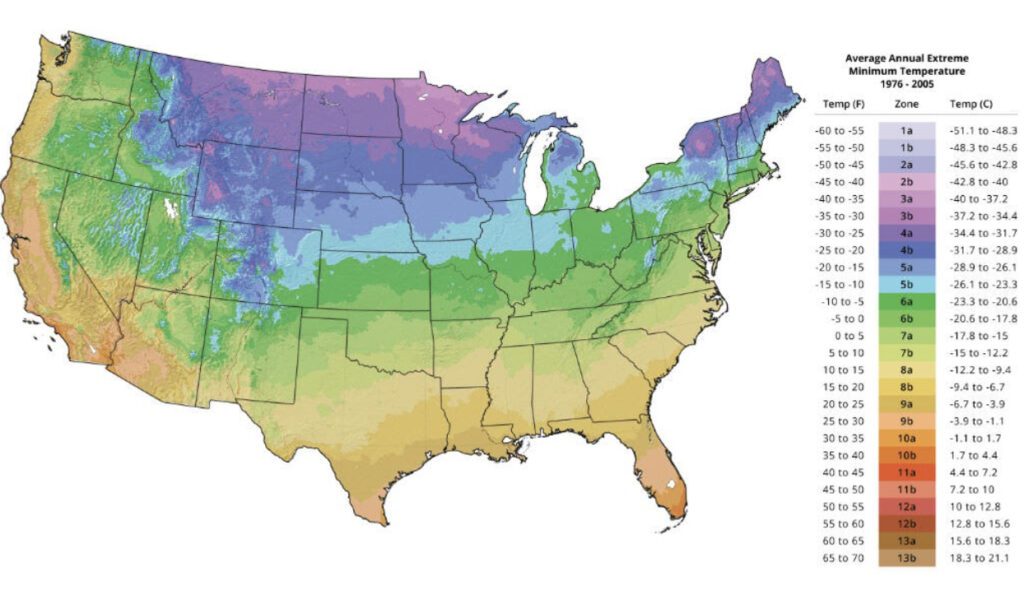
Cold months mean “rest and restore” season for your plant habitat. That doesn’t mean there isn’t plenty to do during Winter to keep your garden healthy, organized, and prepped for growing season — and to keep your green-thumb inclinations satisfied.
What’s Your Zone?
Understanding your region’s average climate is an essential part of taking good care of your garden or farm year-round. The tasks and projects that are most appropriate for your land will depend on your climate and the Winter weather your region experiences.
The specific USDA Plant Hardiness Zones Map pin-points average winter temperature lows — from Zone 1 to 13. This is the best tool to discover exactly which plants are most viable in your location.
Once you know your Zone, even a simple internet search for “winter crops for Zone 4-6” will yield a wealth of knowledge to support your gardening dreams!
Clean and Clear
Winter garden maintenance can feel like a whole lot of cleaning. While it can feel tedious at times, remember that the better you maintain your garden space when growing season closes, the more you’ll enjoy returning to that tidy, ready-to-grow garden next Spring.
- Clean out smaller pots and containers that contained annuals. Store them inside a garage, basement or shed where they’re protected from harsh weather. Exposing plastic and some ceramic pots to freeze-thaw cycles can cause them to crack and erode.
- If you grow in large containers full of healthy soil (like barrels or troughs), you can keep the soil inside, covering it with mulch and/or a tarp to nourish soil for next Spring.
- If you don’t have an indoor storage place for your pots, stack them upside down and cover with a protective tarp.
- Pull up any remaining annuals and toss them in your home or municipal compost.
- If you don’t have a compost option, cut up spent (healthy) plants and place them on top of your raised bed or in-ground soil. They’ll start to decompose over winter and enrich the soil for the spring.
- Pro tip for cold climates: get as much weeding and bed-clearing as possible done in the Fall and early Winter, before temperatures really drop, to spare your fingers from getting frosty.
Support The Soil
Leaving bare soil exposed over Winter invites a whole host of undesirable outcomes, including soil that’s tapped of nutrients come Spring.
Enriching soil during less bountiful months not only helps support a bountiful Spring garden, it also prevents erosion during those Winter freeze-thaw cycles and precipitation. Supporting your soil throughout Winter can be as simple as covering up your growing area or as extensive as planting a cover crop.
 Plant Cover Crops
Plant Cover Crops
Cover crops suppress weeds, restore soil nutrients that your Summer and Spring plants used, and prevent erosion and disease.
Some of the most popular and easy-to-grow cover crops are clover, fava beans, and other legumes, as well as grasses like oats, barley, and rye. The time to plant cover crops is before the deep freeze arrives.
Cover Soil
Not ready to plant a cover crop? You can protect your soil in other ways.
If you grow in raised beds, cover your soil with a layer of mulch, or even with nicely chopped pieces of those spent annuals you pulled up. (Don’t do this with any diseased or pest-ridden spent plants.)
You can even cover your soil (and the mulch on top of it) with a tarp to protect it from harsh weather.
Embrace The Winter Harvest
Depending on your Climate Zone, you may still be harvesting into early Winter! Take full advantage of your cold-season harvest and allow plants to fully run their course.
Or perhaps you’re gardening in a Zone that supports growing cool-weather crops like citrus, kale and other leafy greens, and root veggies — especially carrots and beets, which get sweeter in cold temperatures!
 Reflect and Plan
Reflect and Plan
Winter is the time for cozying up by the fire with a mug of tea, your gardening dreams, and all your new seed catalogs. Take some time this season to relax, reflect, and plan — and appreciate.
Here are some tips on how to embrace Winter garden planning:
- Look back at what worked and what didn’t during the Spring and Summer months. Record this in your garden journal.
- Dream about what you’d like to plant, harvest, and eat next year. Get imaginative!
- Assess your land, beds, and planting areas. Will you need more space next year? Perhaps you want to scale down?
- Order seeds early! Homesteading and home gardening is experiencing a surge in popularity (yay!), so serious urban farmers will want to get a head start on scooping up the seeds they want.
- Consider adding diversity to your garden with native plants and pollinators.
- Organize your saved seeds, if you are a seed saver, and chat with friends and community members about swapping seeds.
- Artistically inclined farmers may use a journal to capture drawings of the wildlife and weather that passes through your urban habitat throughout winter.
Not only is garden journaling and planning a great way to keep your mind and hands at ease, it’s also in-line with what nature intends for us at this time of year. Winter is, for many in the plant and animal kingdoms, a time for rest, restoration, even hibernation and dormancy. Why not join in?
Show us your True Organic Plants
#GrowWithTrue
www.trueorganic.earth
What’s So Great About Seabird Guano?
November 29, 2021
admin
What’s So Great About Seabird Guano?
With a balanced nutrient profile, time-tested ability to stimulate growth, and TRUE’s food-safe guarantee, Seabird Guano might just become your new favorite plant supplement.
We know what you’re wondering… and, yes: “guano” means droppings. Think of it as manure, but from birds and other flying animals (you may have heard about bat guano, too). Just like when we use the word “manure” to designate something more than bovine excrement, guano is a complex, nutrient-dense substance that is much more than “droppings.”
 What Makes Seabird Guano Different? That Fish Diet!
What Makes Seabird Guano Different? That Fish Diet!
Plants love guano. But don’t assume that every bird dropping is created equal.
Seabird guano is unique from other birds’ guano—and other types of animal manure—because it contains a specific mix of macro- and micronutrients that is incredibly supportive for both plants and soil.
Thanks to the birds’ fresh ocean buffet and the guano’s drying process, seabird guano is packed with Phosphorus, Potassium, Carbon, and Nitrogen.
Plus, decomposed organic matter from the birds’ prey contributes even more helpful ingredients that soil microbes need to multiply and thrive.
Nutrient Makeup
Phosphorus (P) is especially important for root and bloom development, which results in more robust fruit and flower growth. On a microscopic level, strong root development means plants can absorb more water and nutrients from the soil—resulting not only in bountiful yields and big blossoms, but also long-lasting, happy plants.
Potassium (K) supports root systems and photosynthesis. In other words, K is all about growth!
Carbon (C) and Nitrogen (N) are essential foods for all plants, as well as soil microorganisms. If you’re a home compost-maker, you’ll know that a balance of carbon-based and nitrogen-based ingredients are what make a healthy compost mix (along with some other important ingredients). Nitrogen is also responsible for supporting foliage growth.
An Amazing Soil Biostimulant
If you know TRUEⓇ, you know we’re obsessed with soil health.
Supplying soil with macronutrients (carbon and nitrogen, specifically) and micronutrients (thanks to all those decomposed and decomposing fish parts) stimulates microbial activity. That ensures that the microscopic inhabitants within soil, like bacteria and fungi—and slightly bigger-than-micro lifeforms like earthworms—thrive.
Soil is amazingly alive! Read more about what makes up healthy soil, and how you can support it.
 Nutrients For Now And Later
Nutrients For Now And Later
One of the uniquely wonderful aspects of seabird guano is its combination of readily available and slow-release nutrients.
What does that mean for farms and gardens? Plants get nutrition they need right away and they’re supported with other nutritional support throughout their whole crop cycle.
What’s It Good For?
Seabird guano can be used on both indoor and outdoor plants, in-ground and in containers (but keep reading for a gentle word of advice regarding seabird guano and your houseplants). It’s pretty darn versatile!
The overall nutrient makeup of seabird guano encourages plants to grow rapidly and to develop robust flowers and foliage. Its high humus properties (high quantity of decomposed organic matter, a keystone of soil fertility) helps increase nutrient availability for your plants.
Anything you’re growing with lots of leaves would benefit from some seabird guano. It’s a perfect plant food to help support for:
- Leafy green vegetables
- Fruit trees
- Berries
- Landscaping foliage
- Any flowering plant!
It’s known to improve yields, enhance flavor (especially of fruits and berries), and support the long-lasting health of perennials (thanks to the nutrients that support root systems).
Get to know more about our seabird guano, why we added it to the True OrganicⓇ plant food family, and how we ensure sustainability from our Founder and Chief Agronomist.
When To Apply
We recommend two applications per year, one in Spring and one in Fall for outdoor plants. Seabird guano helps fulfill plant nutrient cycle demands during seasons when flowering and root development could use some support.
Houseplants benefit from a Spring application, when they begin a new growing season, making lots of leaves and buds.
For some plants, seabird guano can be used throughout the flowering season to support robust blooms. This is especially great for plants with lots of foliage, like trees and berries. Always check with your local garden center, nursery, or farm and feed store to see what frequency is right for your plants.
Just like any plant food, it can be tempting to over-apply seabird guano in hopes that more is better. Always follow our mixing and application instructions on your TRUEⓇ product package! Adding too much or fertilizing too often can damage your plants.
 When To Be Careful
When To Be Careful
Seabird guano can be used for outdoor or indoor plants, but because of its potent smell, you might want to go light on application to indoor plants.
Outdoors, some wildlife may be attracted to the odor of seabird guano. Be careful if you live in a place with lots of wildlife, or protect your garden plot with a fence.
Sustainably Harvested
The best seabird guano comes from Peru—that’s where we ethically harvest our product for True OrganicⓇ Seabird Guano.
While seabird guano exists in other places in the world, the deposits off Peru’s coast contain the absolutely highest quality guano for agriculture. Why? This part of Peru’s coast doesn’t get much rain at all, so the guano is well preserved, high in nitrates and other macro- and micro-nutrients, and “cured” (dried) on the rocks for ideal consistency.
These thick, dried guano deposits make it possible to harvest and make it very important to preserve the ecosystem that allows them to form—from the birds’ nests to the dry climate.
Seabird guano has been used by humans as an agricultural supplement for hundreds of years. In the 19th Century, before commercial fertilizer was widely produced and used, seabird guano (and other natural ingredients like bone, manure, and ash) rose in popularity. In the 1830s, when Americans first sailed to the Chincha Islands off the coast of Peru to mine guano, the islands were coated with a 200-foot deep layer of seabird guano. In less than 50 years, the supply was nearly completely gone.
Thanks to environmental and economic efforts to preserve these “guano islands” and the birds that produce this incredible fertilizer, the deposits have begun to replenish and are now protected by law.
Sustainably acquiring our ingredients for True OrganicⓇ products is non-negotiable.
We collaborate with the laborers who harvest our guano, the Peruvian government, and environmental advisors who help protect the seabirds to ensure this valuable resource is available for many years to come.
You can start to see why it’s so essential to ethically harvest and maintain sustainable commercial production of seabird guano products. Appreciating the reciprocal relationships between humans, wildlife, and ecosystems is what drives everything we do at TRUEⓇ.
Food Safe
As if all that wasn’t enough to illustrate just how wonderful seabird guano is for gardens, row crops, houseplants, orchards, and all manner of other green friends, our True OrganicⓇ Seabird Guano (just like every single TRUEⓇ product) is guaranteed food safe. True OrganicⓇ is the only plant food available that is made *ISO 22000 certified from Bureau Veritas* (a rigorous, world-class food safety management seal of approval).
Ready to give it a try? Find a bag of True OrganicⓇ Seabird Guano at your local gardening store with our convenient store locator.
Show us your True Organic Plants
#GrowWithTrue
www.trueorganic.earth
Winterizing Your Houseplants
November 15, 2021
admin
Winterizing Your Houseplants
While In the Northern Hemisphere, days are short and the light is low. Winter is just around the corner. Just like you, your houseplants need a new daily routine in Winter—one that involves lots of rest, protection from the cold, and maybe even a vacation to a sunnier habitat.
Most houseplants enter dormancy in late Fall through Winter. Growth can slow or even stop, and that can be disconcerting to devoted plant parents. But it’s a crucial time to support your plants as they rest and get ready for their big growing seasons in Spring and Summer.
Let’s take a look at how to keep your houseplants happy through Winter.
Move them into the light
Shorter days mean less sunlight. As the sun spends less time in the sky, move your plants to the sunnier part of the home to maximize their sun exposure.
If you have a sun porch (protected from cold weather, of course), Winter is the time to turn it into an indoor plant habitat.
Pro tip: examine the orientation of your home. Which rooms and windows are facing south or west? These directions will get more light, thanks to the tilt of the Earth, so reorient your plants accordingly.
You can also periodically rotate plants throughout the season to help each and every inch of the plant get sun.
Protect them from cold
Except for the hardiest of indoor plants, houseplants really don’t like to get chilly. Check around your plants’ habitats for potential cold drafts.
Windowsills, while the best place for getting sun rays, can be drafty spots. Before you move a plant to your windowsill, check for gaps in the window frame, especially if you live in an older house or apartment.
Reduce watering
Beware of overwatering in Winter. Your houseplants need much less water in the Winter months, since they are growing less.
For plants that were getting watered once a week through high-growth seasons, consider watering once every two weeks. Succulents and cacti, of course, need even less water than that (some cacti don’t want or need any water at all in winter).
As always, check in on your plants’ soil moisture and texture with a gentle poke into the soil, about one inch deep. Or, as rare plant expert Elana Gainor suggests, start to get familiar with the weight of your plants so you can pick up a pot and tell if the soil is holding water weight. Learning your plants’ weight will help avoid any intrusive touch into their soil—although most plants will be okay with a gentle soil “poke”.
Pro tip: Set a schedule for Winter watering and write it down. Since more time passes between waterings, it’s easier to forget when you last hydrated your green friends!
It’s also a good time to check that plants’ pots are draining well. Colder temperatures mean water is evaporating less, and as plants intake less water during their slow-growth season, soil may get waterlogged.
If you have plants that are living in pots without drainage holes, consider repotting them into something more drainage-friendly.
It’s a great time to repot
Winter can be a rough time for avid gardeners who live in cold climates. Months without getting your hands in the soil can feel torturous! An antidote to garden-less Winter blues is repotting your indoor plants.
To determine if a plant needs to be repotted, check:
- Root system: Are your plant’s roots busting out of their grow pot? If roots are growing through the holes in the bottom of a pot or even cracking the sides of a plastic nursery pot, it’s time to size up.
- Plant size: Sometimes a plant simply outgrows its habitat. Are your plants’ leaves and stems creeping far beyond the pot that contains them? Go one or two sizes up, so it can grow.
- Soil: Is the plant’s soil completely dried out, not draining, or clumpy? It may be time to repot simply for new, fresh soil.
- Growth: Has your plant completely stopped growing? It might be out of space! Remember that in Fall and Winter, some plants intentionally stop growing, so base your judgements on observations of Spring and Summer growth!
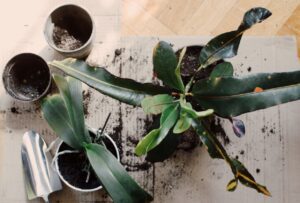
Pro tip: Not all plants need or want repotting. Many rare and sensitive plants, especially, may just stay put. Extremely viney hanging plants that crawl in every direction may be happy just as they are. If you’re unsure about repotting a houseplant, snap a picture and show it to your local garden store experts for advice.
No need for fertilizing
Be wary of fertilizing your plants during this slow-growing season. When you observe the lack of growth on your leafy friends, you might feel an urge to give your plants a dose of plant food so they keep growing, but resist the temptation!
An excess of some nutrients (especially nitrogen) can cause force growth that is weak and won’t last for long. It’s best to let plants rest in Winter—it’s their natural way.
And hey, while you’re at it…why don’t you go get some Winter rest, too?!
Show us your True Organic Plants
#GrowWithTrue
www.trueorganic.earth
Growing Azaleas & Rhododendrons
November 4, 2021
admin
Growing Azaleas & Rhododendrons
If you’ve ever gazed upon a rhododendron’s many bright, clustered blooms, you can tell why it has earned the deserving title of “Royalty of the Garden.”
Rhododendrons and azaleas both belong to the Rhododendron genus, and their gorgeous flowers, cold-resistant leaves, and ease of care makes them incredibly popular for landscaping.
If you’re newer to caring for shrubs, these flowery friends are the perfect addition to your landscaping.
There are over a thousand varieties of rhododendrons! Evergreen and deciduous, low to the ground and taller tree-like varieties, with flowers of pink or white or even yellow. That means there’s definitely a perfect choice for your garden or landscaping. In fact, These flowering shrubs can be found in almost every part of North America, although they are native to Asia.
Soil & Fertilizing
Whilst one of the reasons azaleas and rhododendrons are so universally loved is how low-maintenance they are, they do have a few special characteristics that need attention, and for that reason, they do better and are easier to care for when planted in groups.
Azaleas and rhododendrons have shallow root systems, so a well-draining, moist soil is essential. They thrive in a lower pH soil, between 4.5 and 5.5, so a plant food with sulfur is very important, too. Most rhododendrons only need to be fertilized moderately, with a supplement that isn’t too harsh—which is why we developed a True Organic plant food blend just for them.
As buds begin to grow in early Spring, use the recommended application, being careful to avoid the plant food settling against the stem. We recommend a Fall feeding too, to prepare your shrub with plenty of nutrients stored in its bark come Spring.
True Organic™ Azalea, Camellia & Rhododendron Food contains 5% sulfur to help lower soil pH and improve availability of micronutrients. We also use other natural, organic farm-grade ingredients like ethically sourced poultry manure and seabird guano (a great source of phosphorus and slow release nitrogen), and shrimp and crab shell meal for calcium and nitrogen.
Like most shrubs, rhododendrons benefit from a decent mulching in the Spring to protect their shallow roots and help the soil retain moisture in this important season.
Choosing Your Varietal
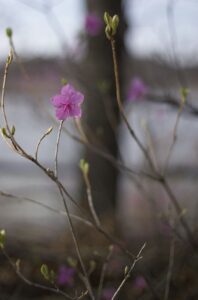
- When the plant flowers.
- What Climate Zone is right for them.
These two major differences will help you narrow down your choices. Of course, your local garden store won’t likely sell plants that can’t grow in your Climate Zone! Check out your Climate Zone on the USDA website if you’re not sure what it is.
Early varieties blossom in early Spring; later bloomers will flower in July and later. A few varieties even flower in Fall. Many types keep their large, green leaves into Winter, making them very popular for colder climates.
Where to Plant
With so many different varieties of rhododendron and azalea, be sure to study the specific needs of your plant of choice.
While they can grow in so many diverse environments, they like it best in places with plenty of rain and moist summers. The amount of sun a rhododendron needs will depend on your climate zone.
- In cooler and mild climates, choose a location in full or mostly full sun, where they’ll get at least 6 hours of full sun.
- In warmer climates, plant in a site that receives afternoon shade, especially in hot areas.
- In tropical zones, azaleas will bloom in full shade!
Remember that they have shallow root systems, so choose a location that either already has a moist, humus-rich soil to plant in, or a spot where you have enough room to create that environment.
 Pruning
Pruning
These easy-care landscaping gems don’t need much pruning. Deadheading is always a good idea for Spring-flowering plants if you want to promote vegetative growth over seed production.
If you need to reduce height or really want to encourage more flowers, here are some pruning tips for your azaleas and rhododendrons:
- Prune after flowering in the Spring.
- Remove dead or diseased branches at any time of year, of course!
- Always use a clean, sharp tool to take off spent flower stalks.
- Remove dead flowers from rhododendrons carefully, making sure to not disturb next year’s buds, which are growing just under the old ones.
One of the delights of tending to rhododendrons and azaleas is enjoying their luscious blooms inside! When flowers are blooming, carefully trim your favorite blooms from mature stems to bring the beauty of these beloved flowering shrubs into your home.
Show us your True Organic Plants
#GrowWithTrue
www.trueorganic.earth
The Best Fall Harvest Recipe Ideas
October 29, 2021
admin
Fall Harvest Recipe Ideas
While Summer can seem like the ultimate harvest season, a delicious and health-boosting bounty awaits the patient Fall gardener. Ready for some inspiration for cooking from your Fall garden harvest?
If you’re like us, the most exciting part of tending a Fall garden is chowing down on the delicious seasonal meals made from nutrient-packed home-grown food. As temperatures and leaves start to drop, cool-weather crops reach their full potential.
Fall Harvest Crops
Remember: Crops will grow slower as days get shorter and plants get less sunlight. Although it may take those colder-weather vegetables a bit longer to mature, their bounty is well worth the wait.
Apples
While most of us are used to eating apples all year-round, their natural harvest time in the Northern Hemisphere is later summer and into Fall. Depending on your region (hello, Pacific Northwest!), September through November may be prime apple picking time—and prime apple pie time.
Beets
A classic Fall crop, beets are more versatile than you might think (if you’re new to growing and cooking them). Keep reading for a delicious oven-roasted recipe to introduce your whole family to this immune-boosting root veggie.
Squash
The chillier season is squash’s time to shine! There are so many varieties of squash to choose from—and if you’ve prepared your garden for a happy, bountiful Fall, there should be plenty of room for these viney plants to flourish.
Leafy Greens
Kale and other hardy greens love the cold. Before frosts, arugula and spinach will thrive, too. These are top-notch immunity foods, so go wild with greens in the kitchen.
Be careful, though—most greens (and many other crops) are sensitive to frost and freezes, despite their hardier-than-average nature. Especially with more tender greens, consider covering rows with a lightweight protective layer when temperatures start to drop below freezing at night.
Brussels Sprouts
Some climates yield Brussels sprouts in warmer late-summer months, but these sturdy stalks do love the cold.
Brussels sprouts are another misunderstood and much shunned veggie, just like beets—but we’ve included a delicious, easy, family-friendly recipe below to introduce them into your Fall menu.
Hardy Herbs
Fall and Winter are the feature seasons for shrubby perennial herbs. Don’t forget the flavor just because Summer is done!
As bright Summer annuals like basil and dill go to seed and are pulled up, shift to “warmer” flavored herbs that can enhance soups, stews, and roasted root veggies. Our favorites are thyme, rosemary, and oregano.
 What’s On The Menu?
What’s On The Menu?
Let’s get to the recipes!
Roasted Veggies
Roasting is a historically cold weather staple for many reasons, least of all the warmth that the oven provides to your home as those delightful dishes are cooking.
It’s fun and easy to get creative with a roasted vegetables dish by adding fruits, herbs, and nuts—you almost can’t go wrong! Try rosemary, apples, sliced almonds, or even some pomegranate seeds sprinkled on top after taking the dish out of the oven.
This recipe for Roasted Brussels Sprouts & Butternut Squash from The Spruce Eats adds even more flavor and texture by adding pecans and cranberries.
Some folks are reluctant to put beets on the family table, since they can be tricky to cook to perfection and have such a unique flavor. Try a simple and lovely dish like Pure Wow’s Oven Roasted Beets and Potatoes to bring beets to your table.
For a more complex flavor, try this dreamy Roasted Beets with Quinoa and Pears dish.
Salads
Don’t discount salads just because summer is over! So many of the crops above can be tossed together for incredible seasonal salads.
This delectable Fall Salad recipe from Better Home and Gardens uses pears, pecans, and maple dressing to weave Autumn flavors together. Feel free to substitute the salad greens for anything you have growing in the garden, like arugula or kale.
Soups & Stews
And now for the champion of all Fall and Winter dishes: soup! Soup and stew can seem boring and bland, but when you harness the many possibilities of flavor, texture, and ingredients, soup might become your favorite meal.
A beautiful blended soup is the way to go for picky veggie eaters, and can be easily made in batches and frozen for later. Our mouths are watering just thinking about this Kale and Broccoli Soup from Food Network.
For a heartier version of chicken soup, take inspiration from this Easy Fall Chicken and Vegetable Soup and add your garden’s flavors.
Immune-Boosting Bounty
Embracing seasonal eating not only connects you and your family to nature’s rhythms, it can also help boost your immune system for cold and flu season.
Many Fall vegetables and fruits are packed with immunity-supportive vitamins and antioxidants your body needs to defend against illness and keep you cozy in cool weather.
Did you know that healthier, more microbially rich soil actually boosts the nutritional value of the food that grows in it? That’s just one of the reasons why we’re so passionate about soil health and regeneration here at TRUE. Healthy soil is essential for a healthy planet, and humans rely on it, too.
Show us your True Organic Plants
#GrowWithTrue
www.trueorganic.earth
True Organic Inside Scoop with Justin
October 25, 2021
admin
Inside Scoop with TRUE’s Senior Vice President of Retail
Ready for a look behind-the-scenes at what we’re excited about at True Organic™? After two decades of supporting some of the country’s most popular large-scale organic farms, we’re bringing industry knowledge to your home garden.
We sat down with our Senior Vice President of Retail, Justin Comages, who has been a part of the TRUE® team since our very beginnings. Justin gives us the inside scoop about:
- What to do to support your garden as Fall arrives
- Plant foods that are perfect for every gardener
- When to use single-ingredient food vs. when to use blends
- And growing solutions from big organic farms that you can use, too!
It can be tempting to let go of garden chores as soon as Fall hits, but this season is actually a prime time for tending to soil health. Can you give us some tips for Fall applications?
Justin says: Before leaf-fall, it’s time for a full application for perennials like fruit trees, roses, and shrubs. We recommend both a Spring and Fall application, and people sometimes lose sight of the importance of that Fall application. Think of it as “putting the plant to bed.”
It’s important to get that Fall application done before a leaf-fall. Once those leaves are down, that plant has essentially gone dormant and it’s going to be “hibernating” until temperatures warm. That Fall plant food application gives that perennial a chance to absorb the nutrients and store them up into its bark or branches, so it’s ready to go in Spring.
Get the plant food into the ground, work it into soil well, then just let the soil do its job. That’s the beautiful thing about organic—we’re working with the soil, not against it.
Neglecting a Fall application can mean stunted growth and slow response to supplements in Spring, which can be harder challenges to overcome with organic practices.
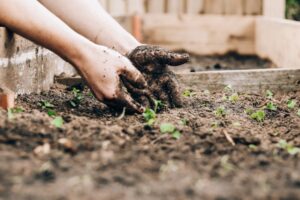
Justin says: Prilled Sulfur is an amazing soil amendment that we added with focus on region-specific growing, and for gardeners who have a bit more experience. It lowers soil pH, which is going to be beneficial for most all plants, especially your landscaping. Sulphur also helps the mineralization and micronutrient uptake. Depending on your region, the existing soil pH could differ a lot. Now, I know this sounds pretty technical, but you don’t have to be a master gardener to start getting to know your soil better. You can start by doing a quick internet search of your region and “soil survey,” or even chat with the experts at your local garden center, nursery or farm and feed store. TRUE® has been providing organic fertilizer to large-scale farms for almost 20 years.
Have you seen any large-scale solutions that work great for small-scale projects too?
Justin says: Definitely: liquid plant foods. Most home gardeners will really benefit from incorporating liquid plant food with dry.
For many years, large-scale agriculture practices only incorporated dry (granular) fertilizer for a simple twice-a-year application. That works well, but complimenting crops with an in-season application of liquid has helped farmers increase yield and quality in a big way.
There’s a mainstream belief that you can’t grow as much organically as you can with conventional methods. That couldn’t be further from the truth.
On a larger scale, we’ve seen organic farms yielding the same quantity as conventional. That’s huge. We have plenty of partner farms that grow more with organic methods than conventional. Of course, that’s thanks to a variety of different tried-and-true farm-specific practices—but one that’s been a major boost for our farm partners is that liquid application.
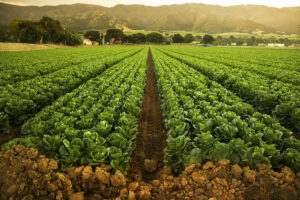
What’s your go-to TRUE® product for someone who is brand new to using plant food?
Justin says: Our All Purpose Plant Food. It’s such a perfect product that can be successfully used on anything that you’re growing. It’s easy to use and pretty much fool-proof! It gives you a security blanket to build on by balancing nutrients for healthy soil that can support healthy plants.
What about specific products that are perfect for California and the Western United States? Justin says:
First: the Herb & Leafy Greens Food. It’s such a unique product in the plant food space, and it’s a very near and dear blend to TRUE®’s heart. We support the majority of leafy green growing here in CA—some of America’s largest produce farms that put organic food on family tables all across the country—so it’s the product of decades of research and development, tried and true testing in the agriculture sphere.Second: Raised Bed Food. I’m proud of how we carefully developed this plant food for one of the most popular ways to grow here in California—where the square footage can get expensive! And last, but certainly not least: Berry Food. We support a lot of berry production on the west coast and we specifically formulated this product based on conversations with those expert berry growers. We put everything berries need into one bag.
What else makes those products so good for our region or other regions?
Justin says: That’s what is so exciting about all the products we’re crafting at TRUE®: they can be used and adapted wherever you live, for whatever you’re growing. Home gardening is much more flexible than large-scale agriculture. You can make a big influence with a small change. For example, if you have a short window to grow crops (perhaps further North in the U.S.), Blood Meal can help deliver fast nitrogen in a short window. Bone Meal will increase phosphorus and help a plant develop strong root systems. Our signature Seabird Guano is a potent ingredient that promotes verdant growth for so many crops (and you can read more about that in our interview with TRUE® founder Jake Evans).We want home gardening to be accessible to everyone, whether you’re growing a big veggie harvest or nurturing a single rose bush. The more you learn about what works in your climate and your garden, the more you may want to use those single-ingredient, specific supplements. But the wonderful thing about True Organic™ Blends is that we’ve pre-planned everything you need to support a specific plant—we really want it to be easy.
What else do you hear from people who are new to TRUE® products?
Justin says: The number one thing I hear is how much people love the ingredient consistency of our product—it doesn’t separate like some other organic plant foods tend to. You’re going to get the same exact homogeneous blend at the top, middle, and bottom of the bag.
After product consistency and homogeneity, it’s Food Safety. People aren’t afraid to use TRUE® products in the garden with their kids or in places where the family pet might run through.
The other bottom-line feedback I hear consistently is that these products just work. We formulated these products based on decades of research and development in the large-scale agriculture world, so it’s no surprise that home gardeners are stunned by the overall efficacy—but it’s always exciting for us to hear.
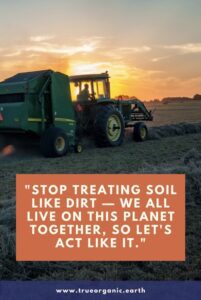
Show us your True Organic Plants
#GrowWithTrue
www.trueorganic.earth
Caring for Rare Plants with Expert Elana
September 20, 2021
admin
Check out our three-part reel series on instagram where Elana discusses tips and tricks for rare plant enthusiasts:
Elana welcomes us through Sage Float Spa’s spectacular front doors for part one of the series.
In part two, Elana and her sweet dog Fable have some tips for feeding your precious houseplants.
Part 3 shows us a quick plant RX for indoor plant parents!
Are you dreaming of tending to gigantic, lush tropical plants that become the envy of all your plant-enthusiast friends? We’ve got some insider tips for you!
An avid adventurer, wellness enthusiast, and rare plant expert, Elana Gainor, PhD, founded Sage Float Spa as a premier Santa Cruz, California, wellness destination. At Sage, guests can relax with saunas, salt-water float tanks, and world-class massages—surrounded by hundreds of rare tropical plants.
TRUE had the joy of sitting down with Elana, to hear about the incredible ways she’s learned to cultivate these beautiful green friends.
TRUE: How did you get into rare plants?
Elana: I had already been taking care of indoor plants for several years when I opened Sage Float Spa in 2016.
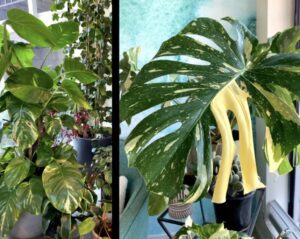
We have a 2700-square foot space with a huge lounge area that’s now completely filled with plants!
TRUE: Why is Sage Float Spa such a perfect environment for all those plants?
Elana: I didn’t realize right away that the spa was going to be the ideal environment for these rares. It turns out that it’s basically a big greenhouse.
First, all the windows have interior sun shades, like car window tinting. The shading filters light and protects the plants from light that could be too harsh.
Next, because of all our spa float tanks, it’s also a very high humidity environment. That’s perfect for these tropical plants that live in that type of natural climate.
TRUE: Who are some of the green friends in the spa?
Elana: If you go into the plant store, we have pretty much one of everything!
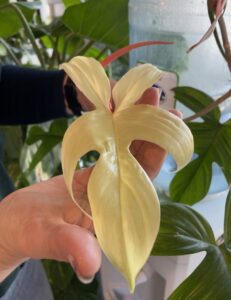
I’m always repotting things, giving things away, and purchasing new plants. Right now I’m maxed out!
TRUE: Why are the variegated varieties so rare and special?
Elana: It takes such a special environment to grow them. A lot of them don’t grow naturally in the United States because of the tropical climate they need.
A lot of rare plants cannot be cultivated from seed. That variegated coloring and different patterns you see are genetic mutations, which means they must be grown from cuttings.
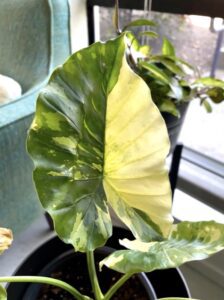
There are some that even I have a hard time taking care of, like our variegated alocasia. It keeps dropping leaves!
It wants filtered bright light, so it’s hard to find the right spot for it in the spa.
I do struggle with bugs, mildew, soil fungus, just like anyone else. It’s all about knowing my rare varieties and understanding what they need. When you pay attention, you can start to tell what’s going on.
 TRUE: How do you use TRUE plant food products?
TRUE: How do you use TRUE plant food products?
Elana: I am already loving TRUE’s Liquid All Purpose Plant Food for my rare plants.
Before I opened it, I thought I’d dilute it even more than recommended—just because the variegated plants are very sensitive, so I’m very careful about giving them anything new.
When I opened it and observed the smell and consistency, I knew it was going to be safe. I diluted the recommended strength and it’s been awesome.
It’s hard to explain how I knew—that’s part of having a green thumb! You just know what’s good and not good for your plants. The TRUE liquid plant food didn’t have a pungent smell and wasn’t too thick or sticky. I could tell TRUE was going to be the perfect strength for my rares.
While I’ve just been using the All Purpose Plant Food, I’m really looking forward to experimenting with Liquid Bloom Boost in the Spring.
TRUE: What makes caring for these plants so challenging?
Elana: It’s their pickiness with their environment.
They need very high humidity, the perfect amount of filtered light, and don’t like to be touched by air. No breezes or bright direct sunlight.
If you think about their natural environment, it makes sense: They’re used to living on dense tropical forest floors. In their natural habitat, they are protected from winds, receive shaded light, and are constantly getting the perfect amount of moisture.

Elana’s Top Tips For Rare Plant Care
Filtered light is non-negotiable.
Elana: Most people aren’t going to put UV protection on their windows, but you can use curtains to get the right light. As your plants grow toward the light, turn them.
Pay attention.
Elana: You can tell if a plant is “stressed out” if it’s looking wilty or dropping leaves. If that’s happening, it needs some extra care. If your plants aren’t happy, move them around and see if that improves things.
Humidity is key.
Elana: It’s important not to over- or under-water them, which depends on seasons. You can get humidifiers or spray the plants with a mister (which we do every day at the spa). But some want to be misted all day, like you see in botanical gardens! And you’re probably not going to do that at home.
Get to know your rares!
Elana: It’s a relationship, for sure. They are sensitive!
For example, I actually don’t even put my finger in the soil to feel for moisture. Your top inch or two of soil could be very dry, but the bottom of the soil could be water-logged. Get into the habit of lifting a plant out of the pot and see how heavy it is. A very wet plant is going to be much heavier.
Of course, as a plant grows and gets more roots, it could be heavier. As you develop knowledge of your own plants, you’ll be able to tell what they need.
If you want to get into caring for rare plants, know that it can be a lot of attention and care. I love taking care of plants, so, for me, it’s worth it!
Show us your True Organic Plants
#GrowWithTrue
www.trueorganic.earth
How Soil Can Save The Planet
September 2, 2021
admin
Beautiful and tasty!
Here at True Organic, we’re obsessed with soil. And it’s not just because healthy soil is the backbone of the farms and food that sustain us. Healthy soil is also one of the keys to sustaining and restoring our planet and atmosphere.
Replenishing our soil plays a vital role in sequestering carbon, improving water retention, and enhancing soil fertility. It’s a mission that sits at the heart of our company.
Let’s take a closer look at the role soil plays in carbon sequestration.
Soil + Carbon = Happy Plants
Dirt is considered simply mineral matter, like sand and bits of rock. (It’s not alive.)
Soil contains some of that mineral matter, plus a lot of organic (living) matter. Bacteria, fungi, earthworms, and all sorts of other living organisms live and thrive in soil.
Plants need to take in carbon to sustain their own energy, and soil needs carbon as well. More specifically, all those microbes that live in soil need carbon!
It’s a symbiotic relationship: the happier those soil microorganisms are, the happier plants can be. As happy plants convert carbon dioxide (CO2) and water (H2O), bacteria and fungi in soil feast on carbon and other macronutrients for their own livelihood, too.
Let’s Talk About CO2
Carbon dioxide is the most commonly produced greenhouse gas (“greenhouse” means that it lingers in Earth’s atmosphere and soaks up infrared radiation, trapping heat). While carbon dioxide is and always has been a naturally produced part of life existing on our lush planet, some types of human activity increase the amount of carbon dioxide in the atmosphere.
Right now, there is a lot more carbon dioxide in the atmosphere than there should be for sustained, thriving life on Earth as it’s meant to be.
Other gases, too, like methane and ozone, have become too plentiful in Earth’s atmosphere. This imbalance of greenhouse gases is harmful to our planet and for us humans.
But it’s particularly that CO2 that we most urgently need to take care of. That’s why carbon sequestration is so important, and why agriculture has such a big role to play.
It’s why we started True Organic.
What Is Carbon Sequestration?
It seems like magic: drawing carbon dioxide out of the atmosphere and storing it in the ground, where it’s actually an essential part of life. But it’s real! And nature actually does it all on its own.
The process of capturing carbon from the atmosphere and placing it into soil is a natural part of plants’ photosynthesis process. It’s happening all the time, all around us. Grass does it, trees do it, even the curly kale and tomato vines in your garden do it.
Biologic carbon sequestration refers to atmospheric carbon getting taken in by plants and deposited back into soil (and sometimes aquatic and geological environments).
To understand how that works, let’s take a stroll through the garden.
Photosynthesis
Thinking back to Earth Sciences and Biology classes at school, photosynthesis is the way plants sustain themselves. It’s how they get nutrients and nourish their cells. With the help of sunlight and minerals from the soil, plants have the ability to break down CO2 and H2O to create their own ”food”.
Under our feet when we’re taking a stroll on green grass, above our heads when we’re hiking through a canopy of trees—all those plants are happily taking in carbon dioxide through their leaves, soaking up sun and water, and turning that into fuel to stay alive.
So what happens to carbon after plants absorb it in the form of CO2?
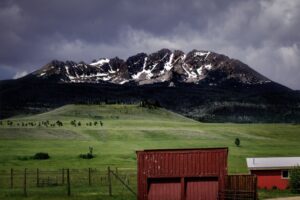
Carbon sequestration refers to the process that puts that carbon back into the soil, where it’s stored.
Agriculture Can Make a Difference
Ready for a dose of hope?
Farming and gardening have massively powerful potential to remove excess carbon from the atmosphere and put it back in the ground.
It requires thoughtful, soil-friendly techniques that help plants thrive in an organic environment while rebuilding soil’s natural potential.
Sustainable, regenerative, organic farming methods encourage and enhance carbon sequestration, and those types of farming practices are booming. Reforestation, too, has been shown to be incredibly effective for carbon sequestration.
What’s more, those organic methods increase yield over time, produce super healthy harvests, and support biodiversity.
Carbon Sequestration In Your Home Garden
While nature does carbon sequestration all on its own, we can help it along. The more plants we tend (including farms, forests, grasslands, native plant sanctuaries, and gardens), the more carbon your plants will eat.
Yes, you can even help capture carbon and nurture soil at home. You don’t need a huge farm or forest to join the movement to rebuild soil to its carbon-capturing, plant-supporting true nature.
Look more into the wonders of regenerative farming and home gardening in our National Soil Health Day blog.
It’s Our TRUE Mission
True Organic was founded with all of this in mind. We set forth on a mission to revitalize soil’s massive potential to support thriving life in all its forms.
We began by providing organic, soil-rebuilding fertilizers to large-scale agricultural enterprises. The big picture is important; we help some of the biggest growers in the country operate with soil health at the forefront.
But change happens on the individual level, too, and we believe it’s vital to support home gardeners make a difference.
Our mission now is to help everyone, from big farmers to community garden tenders, learn about what soil and plants need to thrive—and help you do that every day.
Show us your True Organic Plants
#GrowWithTrue
www.trueorganic.earth
Our Favorite Upcycled Gardening Ideas
July 30, 2021
admin
Upcycled Gardening Ideas
Your garden is a place to express your creativity and enjoy your outdoor space. It’s also your way of caring for the Earth—nourishing plants, restoring soil, and sustaining your own kitchen table.
How about adding even more of your unique style and giving the environment an extra helping hand by creating your garden landscape with upcycled materials?
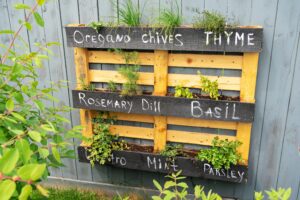
What Is Upcycling?
Sure, garden and homegoods stores sell plenty of lovely outdoor decor that will give your garden or yard a special sparkle. But combining store-bought items with some upcycled, crafty projects to decorate your garden is the perfect way to meld functionality with creativity.
Upcycling means that you’re taking something old or discarded and giving it new life again. It is often considered the artist’s way of recycling! Think of it as reusing with flair.
But, of course, you can follow whatever rules and definitions you want when you’re finding upcycling projects for your garden! Let your creativity shine as you save previously used items from landfills and beautify your backyard oasis.
For some basic tips on designing an amazing garden space, check out our blog all about Edible Landscapes!
Let’s look at some materials to use for your upcycled garden projects.
Wooden Pallets
Sturdy wooden pallets, the kind that packaged goods are shipped and delivered on, are a garden upcyclers dream item. They’re versatile and abundant.
You can find them for free at almost any lumber or feed store, usually tossed out back near the refuse containers. If you’re not seeing any at the stores (be sure to ask!), look at local neighborhood listings and “free” pages online and on social media.
Pallets can be made into compost pile corrals, chicken coops, fences, and even the structure for a hanging garden.
Pallets can have sharp edges, nails, and industrial staples in them, so be careful and remove those before you start working on upcycling a pallet.
Metal Cans
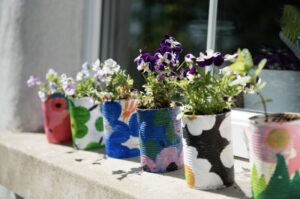
Be sure to very thoroughly clean and dry cans so that absolutely no food is left inside! Remove labels by soaking cans in warm, soapy water—the labels should slide right off.
The fun thing about using metal cans in the garden is how light and portable they are. Try hanging a row along a fence or from a patio, arbor, or pergola. Poke a few holes in the bottom for drainage. Get fancy with paint and coverings!
Tires
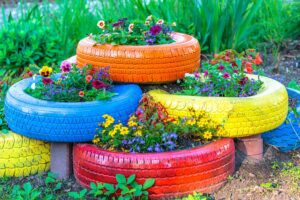
Using old tires in your garden landscaping is such an amazing favor to planet earth—not just saving you a trip to a refuse facility, but saving a huge item from ending up in a landfill.
A really important note about using tires in your garden: be absolutely sure that the tire is incredibly clean before putting any soil or plants in there! You can imagine all the buildup from the road that sticks onto and into tires, and that stuff is a big no-no for soil and plant health. Ick! Only clean tires should be used in the garden or for any objects humans are going to touch, sit on, or swing from.
After cleaning, you may want to paint, finish, wrap, or decorate your tire planter to spiff it up and give it a more natural feel.
Reclaimed Wood & Furniture
Ready to get really crafty? All sorts of reclaimed wood pieces, furniture, and fixtures can be refreshed as useful, cute (maybe a little quirky) garden decor.
We love pursuing yard sales, second-hand furniture shops, and building reclamation centers to look for anything and everything that could be fun and functional in an outdoor space.
What kind of reclaimed items should you look for?
- Wine barrels
- Dresser drawers
- Travel trunks
- Benches
- Wooden crates
Even reclaimed wood from home builds or remodels can be used in your garden for walls, pathways, even making your own raised beds.
Before taking it home, check wood for sharp things (like nails and staples), mold or water damage, and cracks. Choose sturdy hardwood that hasn’t been painted—or, sand paint down before using for planting.
Go Wild!
Once you let your imagination loose, it may feel like anything can become an upcycled decoration or planter for your garden. Silverware, mirrors, bottles, and even old bathtubs can make their way into a gorgeous, creative outdoor wonderland.
We can’t wait to see what you create. Share your upcycling ideas with us by tagging us on instagram at @true_organic.
Show us your True Organic Plants
#GrowWithTrue
www.trueorganic.earth

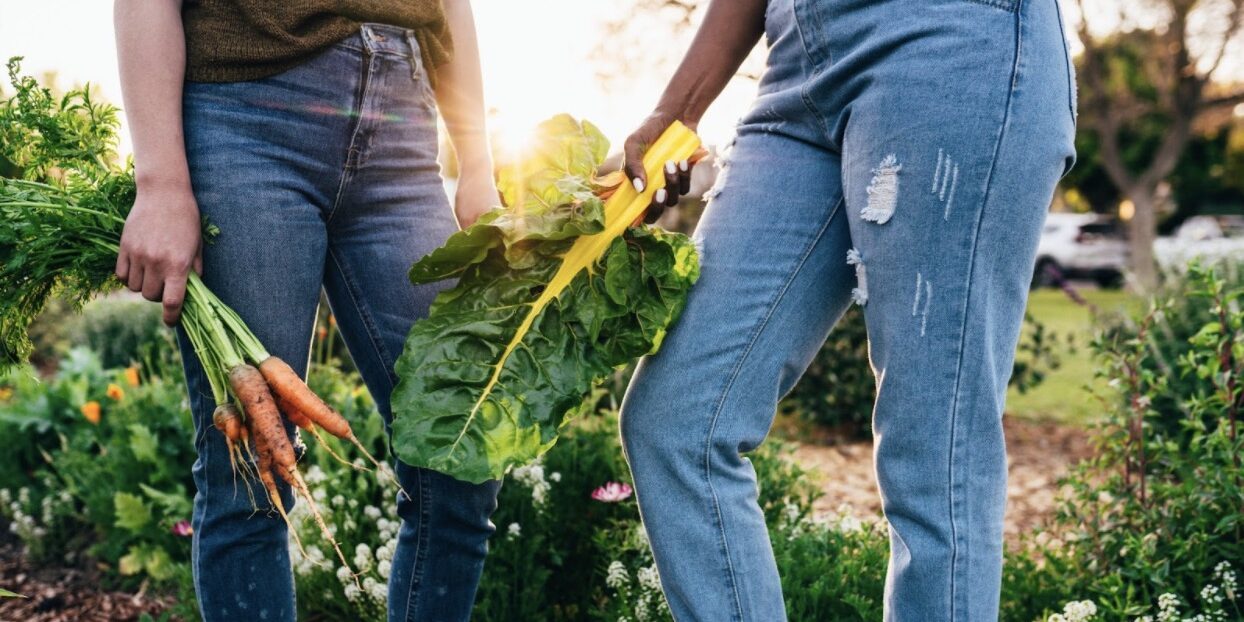
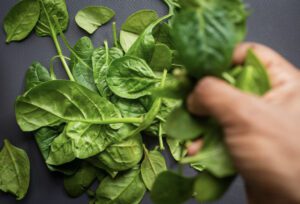
 Winter Squash
Winter Squash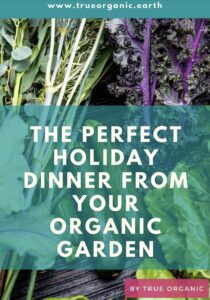

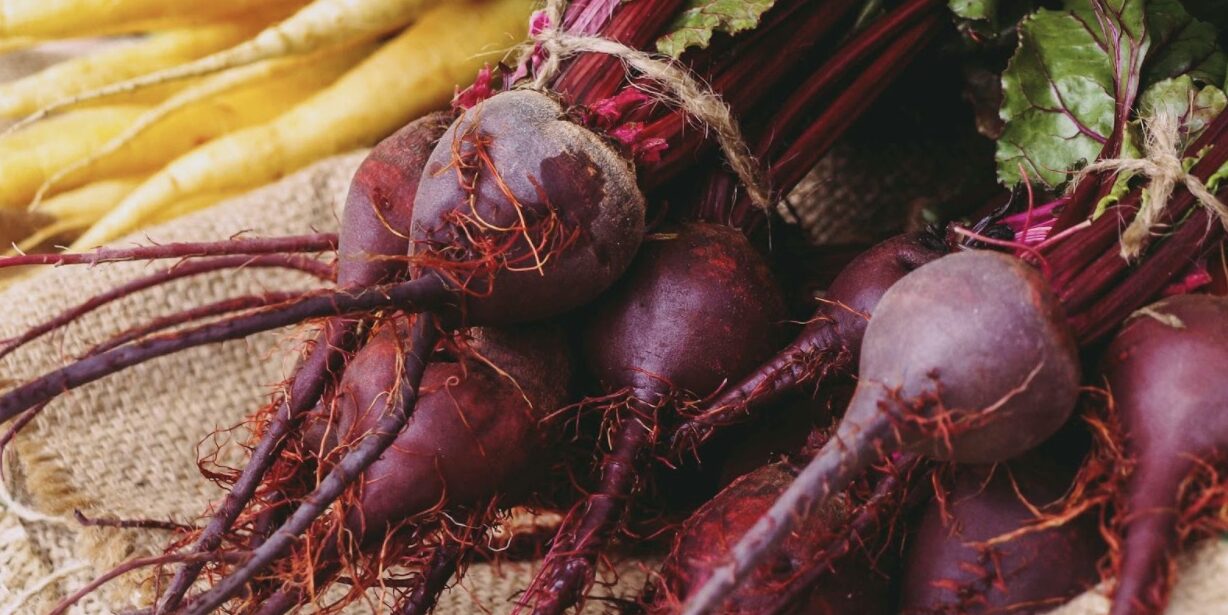
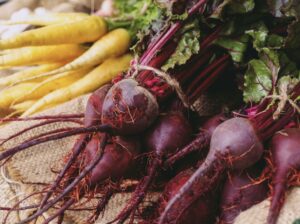 Plant Cover Crops
Plant Cover Crops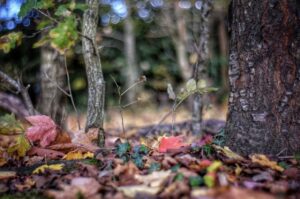 Reflect and Plan
Reflect and Plan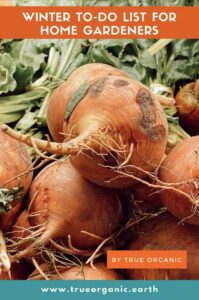
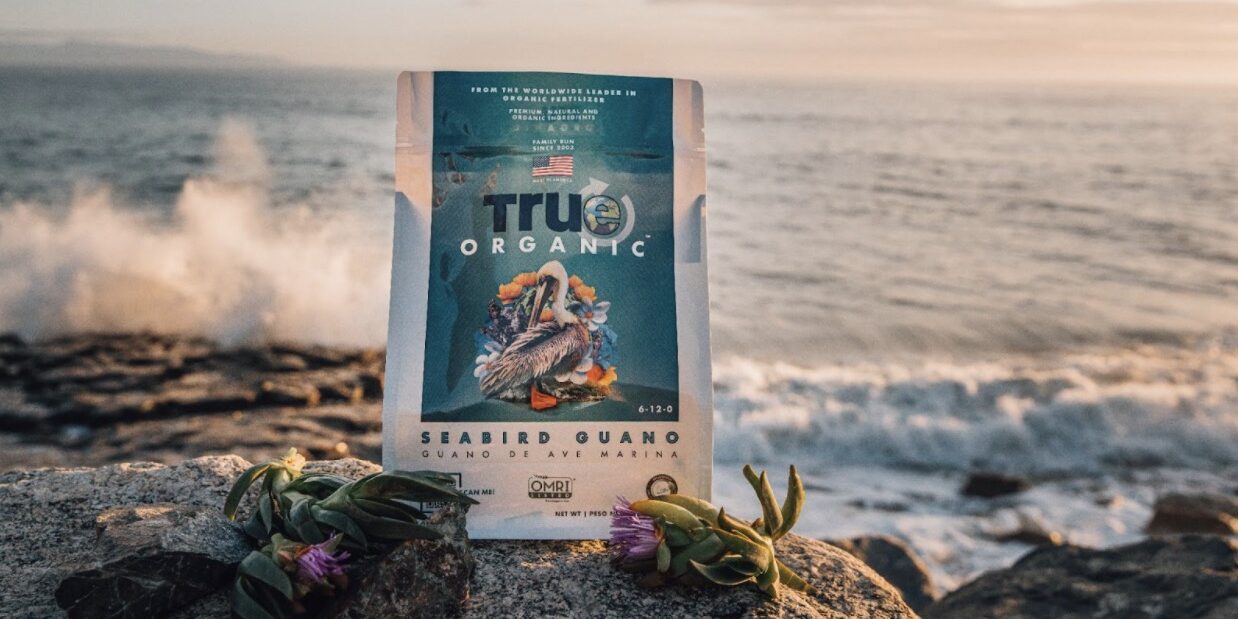
 What Makes Seabird Guano Different? That Fish Diet!
What Makes Seabird Guano Different? That Fish Diet! Nutrients For Now And Later
Nutrients For Now And Later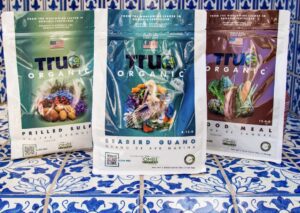 When To Be Careful
When To Be Careful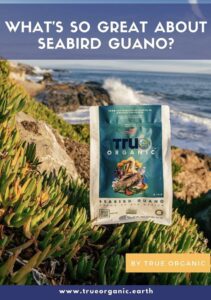


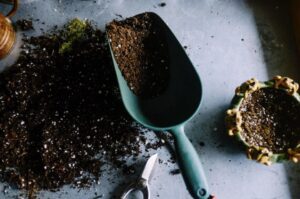
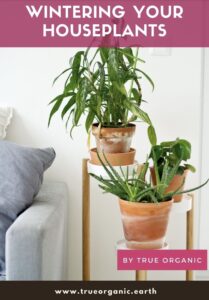
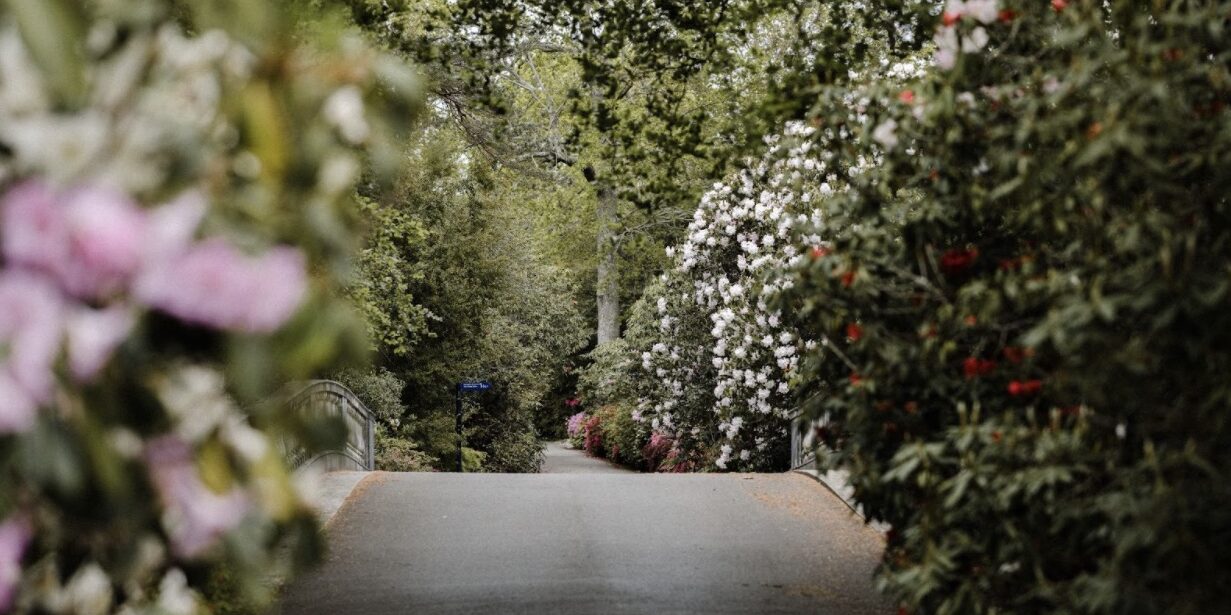

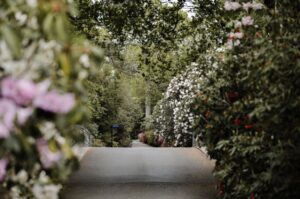 Pruning
Pruning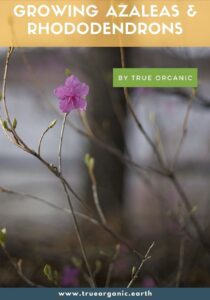
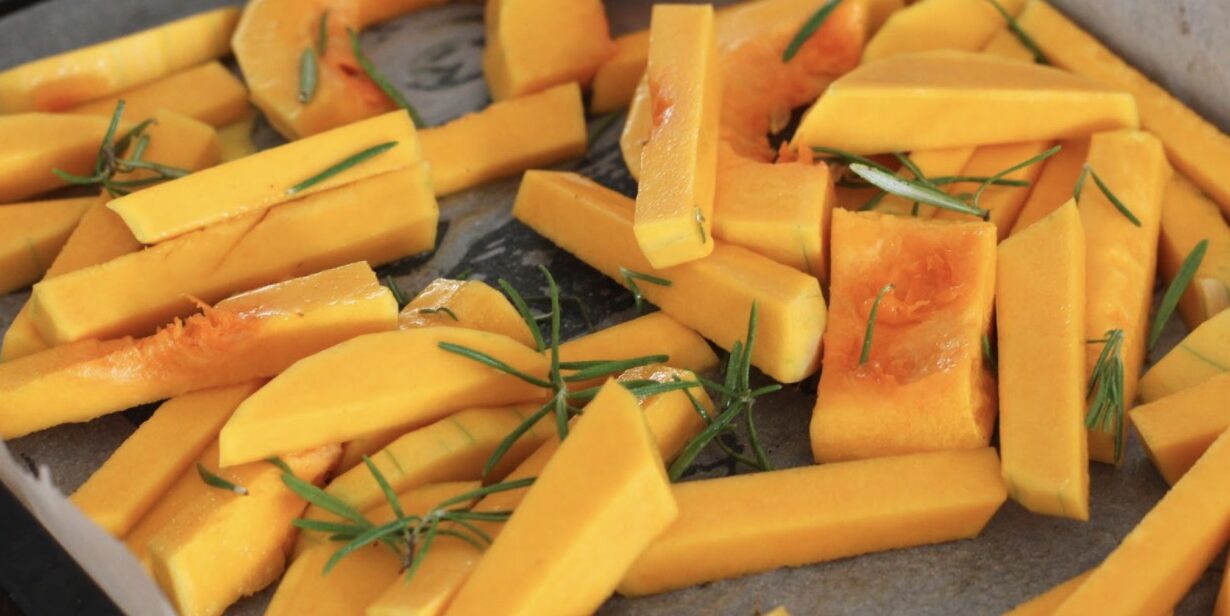
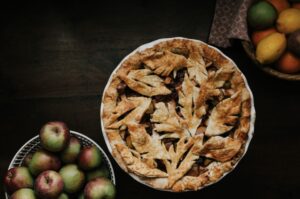
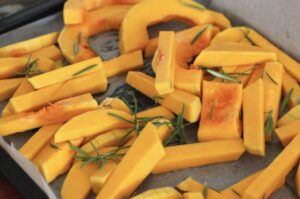 What’s On The Menu?
What’s On The Menu?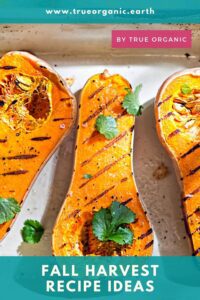
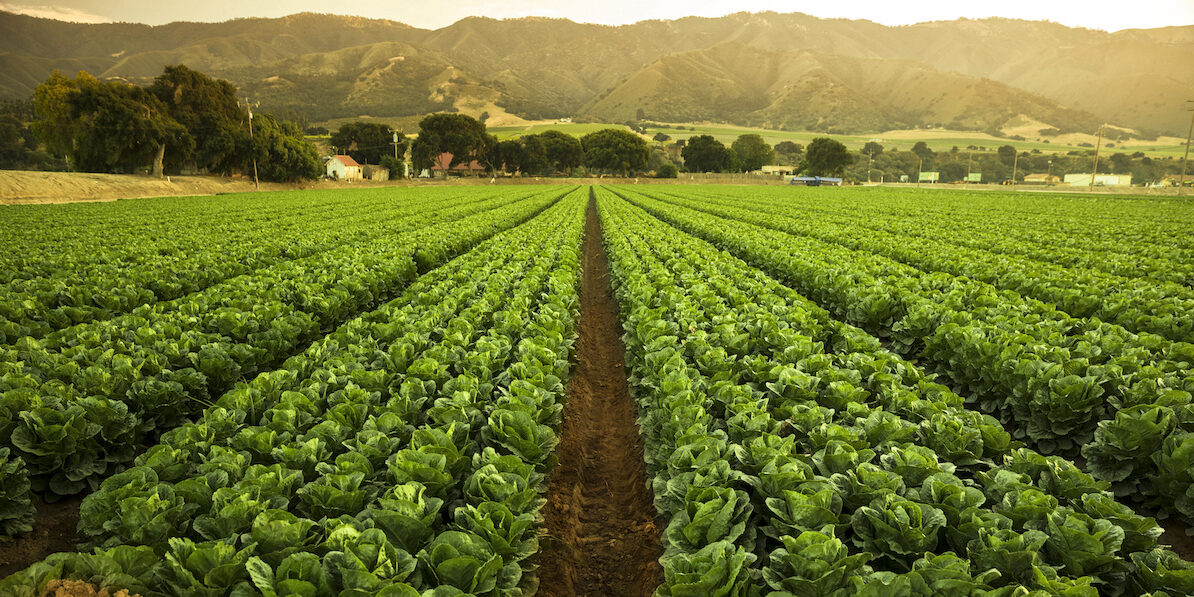
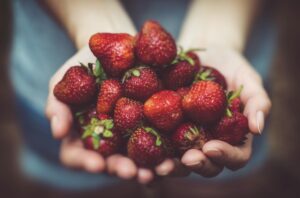

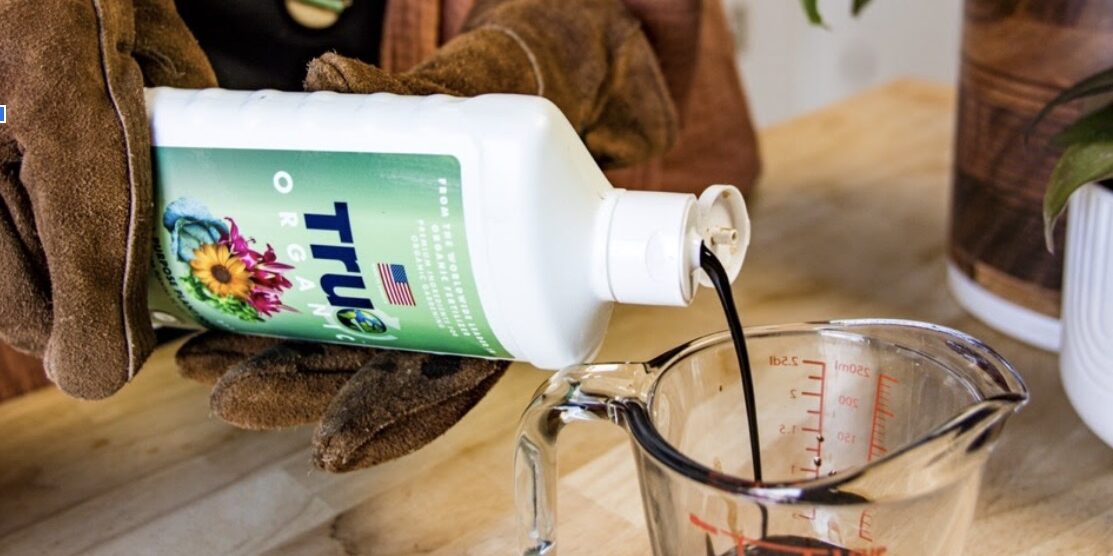
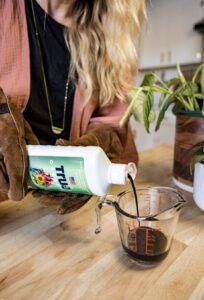 TRUE: How do you use TRUE plant food products?
TRUE: How do you use TRUE plant food products?